|
|
|
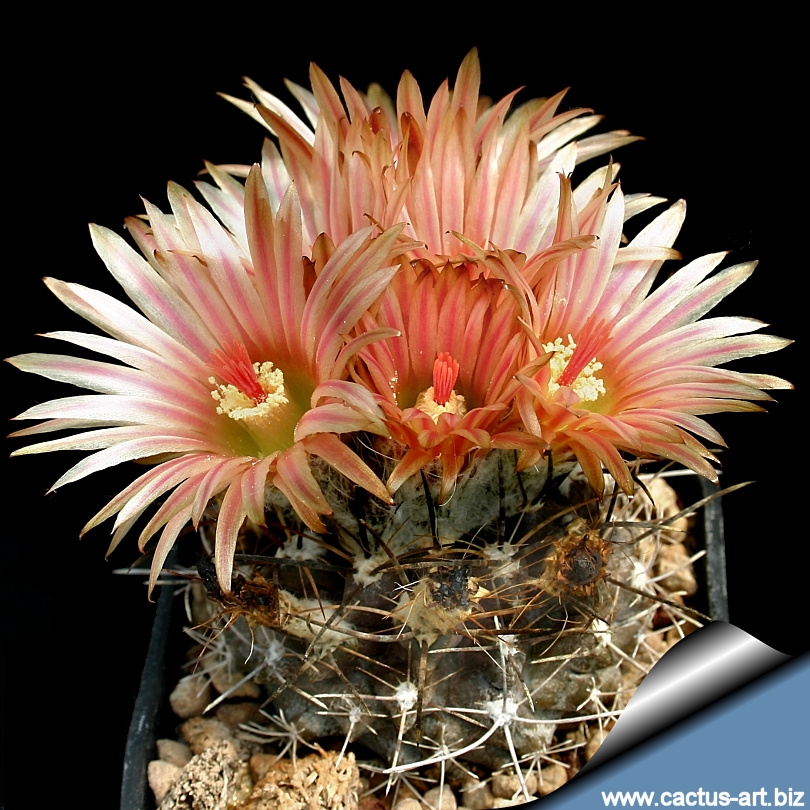
Eriosyce (Neoporteria) crispa FK65-77 Canta de Agua
Showy blooms, long thin black spines.
|
|
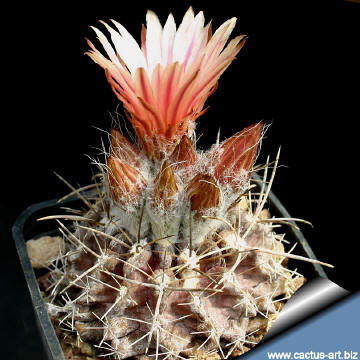
Buds |
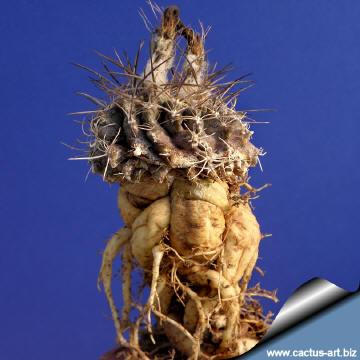
Tuberous roots
|
|
. |
|
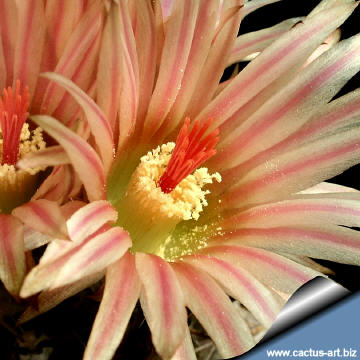 |
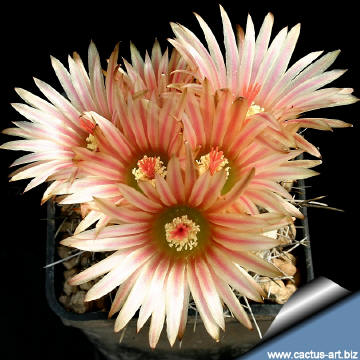 |
|
. |
|
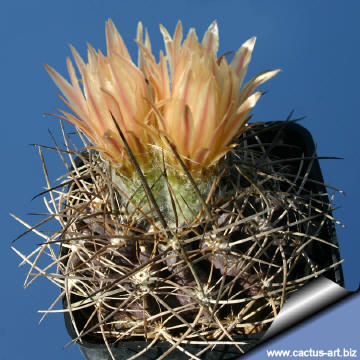 |
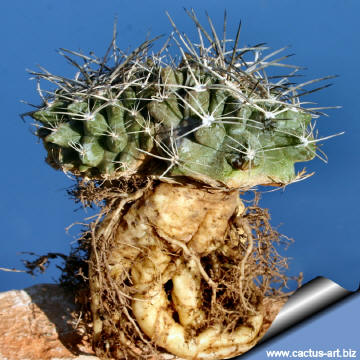 |
|
. |
|
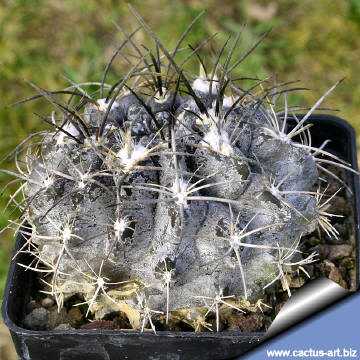 |
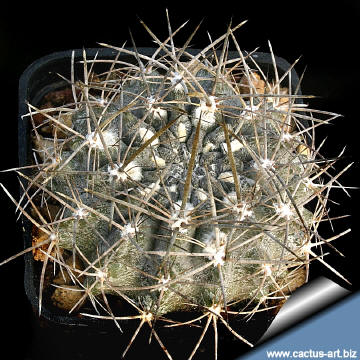 |
|
This plant
often produces a greyish-white waxy coating (Like the copiapoas)
presumably to prevent dessication in it's extremely dry environment. In
cultivation the white waxy bloom is often not produced, revealing the
brownish/blackish epidermis. |
|
Cultivation: It is a summer grower
species. Easy to cultivate but
somewhat
rot prone if kept in a non
ventilated place.
Require a very fast draining drying soil, water regularly in summer,
but do not overwater.
Needs a
full sun exposure (or
light shade)
Good heat tolerance.
Hardy to at least -5°C
( but probably can tolerate - 10° C for brief periods)
Propagation: Usually
propagated from Seeds.
(seldom produces offsets)
|
|


Advertising
|
|
|
|
|
Family:
Cactaceae (Cactus
Family)
Scientific name:
Eriosyce crispa
(F. Ritter) F.
Origin: From Huasco to north
of Totoral Bajo, Atacama, Chile.
Habitat: Coastal areas
of South America, where it grows in areas where very little else grows.
It's a very drought tolerant species. Despite the lack of rain where it
lives, the
extreme aridity is attenuated by the frequent, often dense, coastal
fogs. The fog tends to concentrate in the form
of a cloud band at an estimated height of 500 to 850 m. It
shows a recurrent pattern; usually it
is overcast in the early
mornings, the clouds dissipating during the late morning and returning
during the late afternoons. The plant grows often buried in the ground
and is almost impossible to spot without the flowers.
Conservation status: Listed in
CITES appendix 2.
Synonyms:
-
Neporteria crispa
-
Horridocactus crispus
-
Pyrrhocactus crispus
Heterotypic synonyms:
-
Neochilenia nigriscoparia
Backeberg 1962,
not validly pubblished
-
Neoporteria vallenarensis var. crispa
-
Pyrrhocactus atroviridis
-
Horridocactus atroviridis
-
Neoporteria atroviridis
-
Pyrrhocactus huascensis
-
Neoporteria huascensis
-
Pyrrhocactus totoralensis F. Ritter 1961
-
Neochilenia totoralensis (F. Ritter) Backeberg 1963
-
Neoporteria totoralensis (F. Ritter) Donald & G.D. Rowley 1966
-
Eriosyce crispa var. totoralensis (F. Ritter) Katterman 1994
-
Pyrrhocactus carrizalensis F. Ritter 1963
-
Horridocactus carrizalensis (F. Ritter) Backeberg 1963
-
Neoporteria carrizalensis (F.Ritter) A.E. Hoffmann 1989
-
Neoporteria totoralensis var. carizzalensis (F. Ritter)
Kattermann 1994
Kattermann suggest
the following classification:
subsp. crispa
with hairlike, contorted black spines not easily distinguishable as
radiald and centrals. (Origin West of Freirina)
subsp. atroviridis var. atroviridis with
needle like and 12-14 radial spines (Origin Vallenar and Freirina)
subsp. atroviridis var. carrizalensis with stif needlelike
spines, 12-13 radial spines and approx 15 ribs (Origin:Carrizal and
Carrizal Bajo)
subsp. atroviridis var. huascensis
With stiff, needle
like spines, and few (6-8) radial spines and only 10-12 ribs. (Origin:
East of Huasco)
subsp. atroviridis var. totoralensis
with twisted
spines and few ribs (Copiapo and Totoral Bajo)
|
|
|
|
Description: Flattened to slightly
cylindrical cactus, slowly growing up to 10 cm in diameter.
Stem: Blackish, brownish or dark olive green, often with a
greyish-white waxy coating presumably to prevent dessication in it's
extremely dry environment. In cultivation the white waxy bloom is often
not produced, revealing the brownish/blakish epidermis.
Root: Tuberose roots often separated by a narrower neck.
Spines: Black or brown more or less curved upward & twisted that
are not easily distinguished as centrals or radials, sometime bristly.
Central spines: 1-5, 15-80 mm long.
Radial spines: 6-14, 10-50 mm long.
Flowers: 3,5-5 cm long and broad, funnel-form, diurnal, produced
by younger areoles at the woolly apex, the colour is whitish, pinkish or
reddish with red/brownish midveins. Pericarpel and floral tube with
bracts, wool and bristles.
Fruit: More or less elongated, pinkis-red deishing by basal pores.
|
|
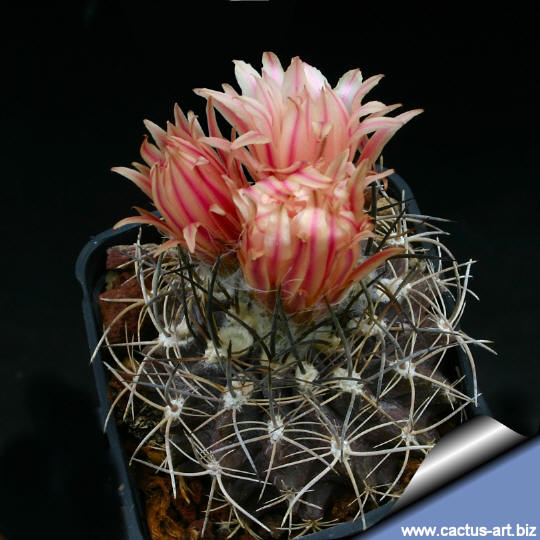
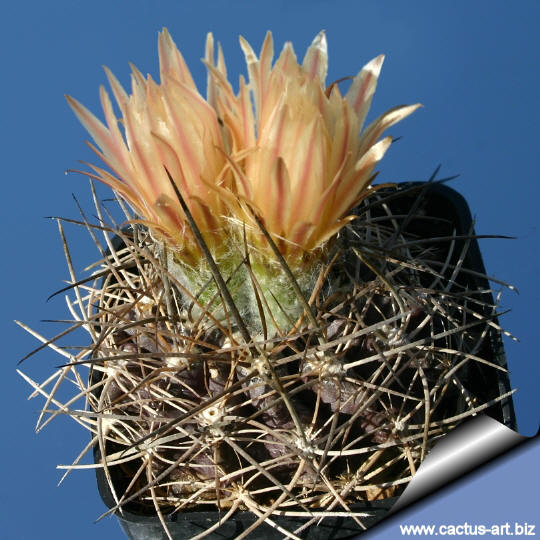
|
|
Photo of conspecific taxa, varieties, forms and
cultivars of plants
belonging to the
Eriosyce crispa
complex
(This
Taxon
has lots of synonyms whit several controversial varieties and
subspecies and comprises a
multitude of different forms, but where each form is linked to others by
populations of plants with intermediate characteristics):
|
|